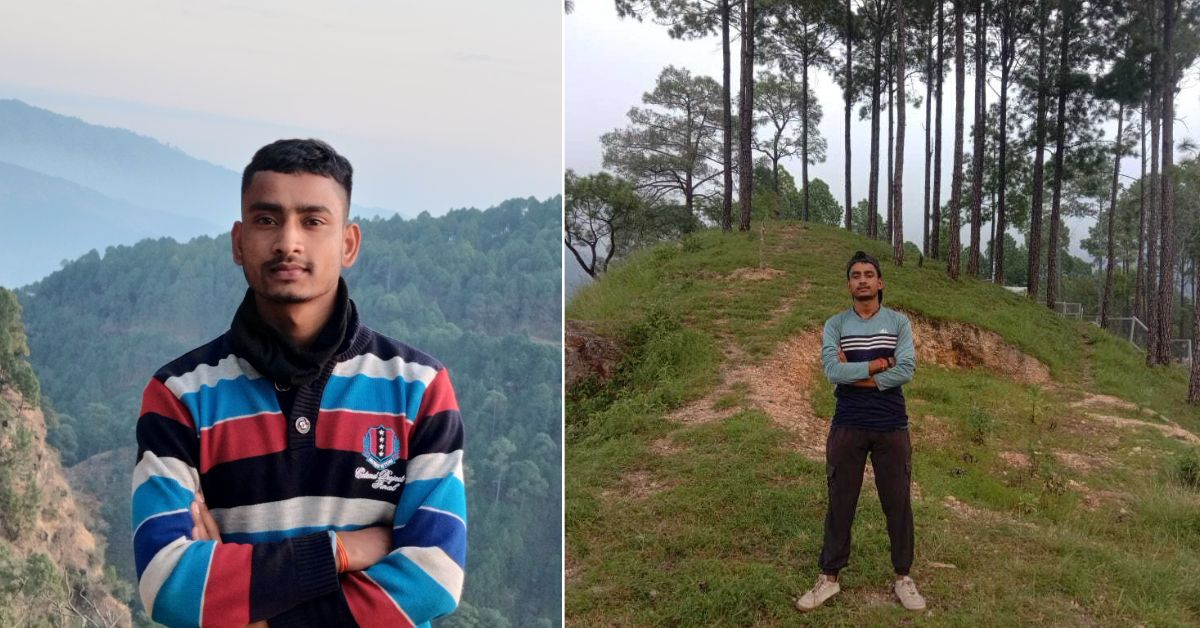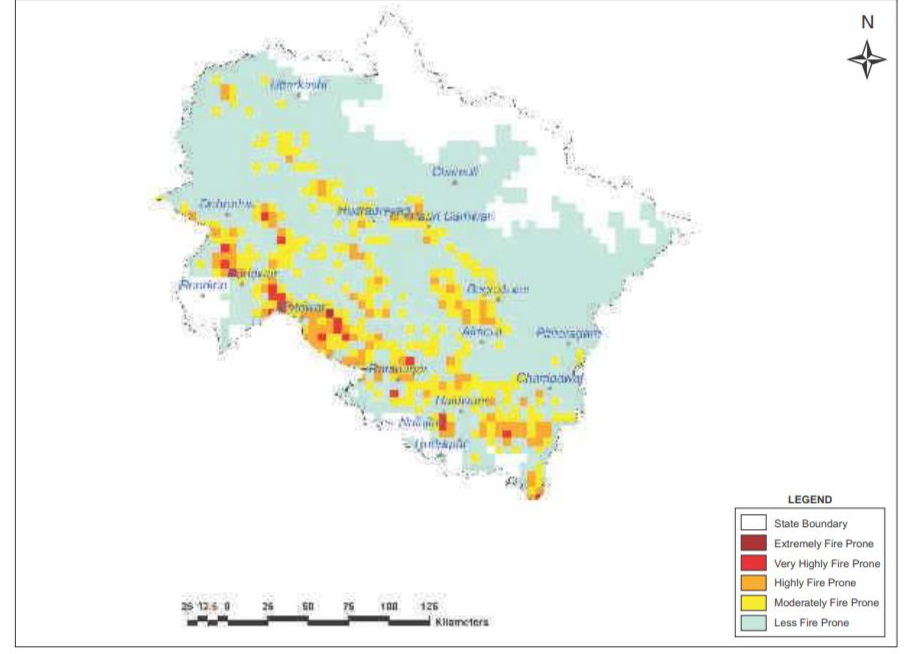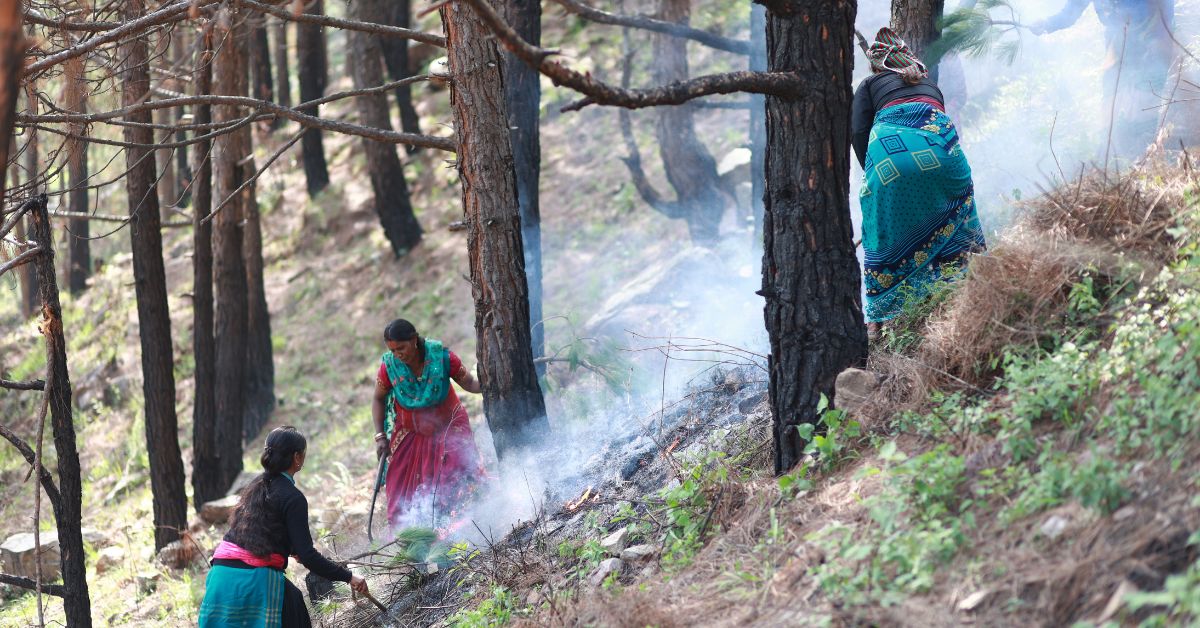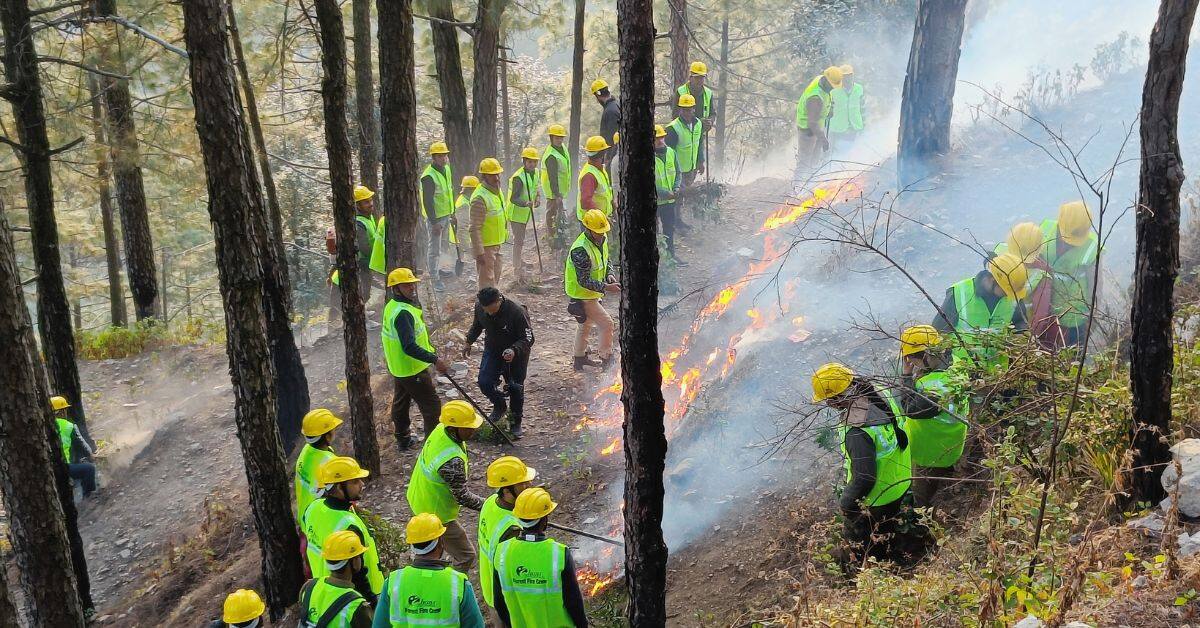This article has been sponsored by The Hans Foundation.
It was a pleasant summer evening in 2022 when a few boys from Chwara village of Pauri Garhwal district stepped out to graze their livestock in the nearby forest. Sadly, they didn’t know the hidden tragedy that awaited them.
The forest had caught fire!
“When we saw the fire had broken out, all of the villagers helplessly ran helter-skelter. While some poured buckets full of water, some tried to save the fodder, firewood, and livestock in their homes,” 21-year-old Pritam Singh, who lives in the same village tells The Better India.
“We remembered how some kids had gone out to graze their cows and goats. Everyone was restless. After some time, we saw them returning from the burning forest. While they had sustained severe burns, we found out that their goats had succumbed to injuries,” he adds.
This happens almost every year in Uttarakhand.
Notably, in the forest fire season of 2022, a total of 1,443 incidents of forest fires were reported — including 642 in Garhwal, 724 in Kumaon, and 77 in protected wildlife zones. This was estimated to affect 2,432.62 hectares of forest area and an economic loss of over Rs 60 lakh.

Commitment to protect the village from forest fires
Unlike most young people who migrate to cities in search of better job opportunities, Pritam chose to stay in his village after completing his higher studies in 2022. “I did not want to leave my native place,” he says.
A graduate with a Bachelor of Arts (BA) degree, Pritam is currently preparing for the Government examinations and has volunteered to become a firefighter.
Growing up in Pauri Garhwal, Pritam says that he has witnessed many forest fires, including the dreadful 2022 fires. “We have a large cover of Chir Pine trees that are rich in organic polymers. This makes them easy to catch fire and hence vulnerable to forest fires,” he points out.
As per the Forest Survey of India 2019, the forest cover in Uttarakhand is 24,303.04 sq km, which is 45.44 percent of the state’s geographical area. And of the total forest cover, more than one-third (32.75 percent) is prone to forest fires. (See map: Fire-prone forest areas under different fire-prone classes).

Highlighting the reasons that cause forest fires, he says, “Incidences of forest fires are common between February and mid-July. These fires are exacerbated largely by human activities such as slash-and-burn agriculture, the use of fire for land clearance, and reckless disposal of lit beedi and cigarettes. Besides, there is also a myth among local villagers that if they set the forest ablaze, it induces rain that will yield nutritious fodder for livestock.”
“These fires not only result in the loss of valuable forest resources and wildlife but also affect humans in direct and indirect ways. It pollutes our water sources that originate from forests. It also increases their risk of drying up. Usually, villagers store firewood and fodder in their homes. And when these forest fires reach these habitations, they take a dreadful form,” he adds.
It is to be noted that Uttarakhand accounts for 1.6 percent of India’s total geographical area. But in terms of forest cover, the state accounts for 45 percent compared to national forest cover of just 21.67 percent — this signifies the rich biological heritage of the state and the urgency to save one of the country’s largest carbon sinks.
Understanding the need to preserve the rich flora and fauna of the state, in 2022, the Delhi-NCR-based NGO, The Hans Foundation (THF) began community-driven efforts to decrease forest fires in the state and promote environmental conservation and ecological balance. As part of this initiative, the foundation enlisted volunteer firefighters — like Pritam — to reduce forest fire occurrences.

Preventing fires through community participation
Following THF’s intervention, Pritam, like many other volunteers, was provided comprehensive training to tackle forest fires. As a result, he was better equipped and prepared for any untoward incidents similar to those that occurred in 2022 and was able to respond to the emergency and control potential fire incidents.
“We were educated on how to implement local mitigation strategies to effectively control any forest fire. We were provided with firefighting kits that included a set of different types of fire rakes, a modified sickle, a shovel, a fire beater, and a tool kit bag. Training was provided on fire line development, biomass management, safety measures during fire dousing, and uses of the various equipment that were provided to us,” he shares.
Explaining how he responds to the emergency, he says, “We first inform the forest department about any forest fires that occur in the area. Meanwhile, we start clearing broad strips of land of all inflammable material like dry leaves and fodder so that fire does not extend from one area to another. After making forest lines, we also throw sand to extinguish the fire. However, if the fire is on a large scale, we try to prevent it from spreading further rather than extinguishing it.”

Like Pritam, THF’s initiative of preventing forest fire has seen 5,066 young firefighters being trained in 1,000 villages under 10 development blocks of Pauri Garhwal, Tehri Garhwal, Almora, and Bageshwar districts.
Additionally, THF has also enhanced community resilience by reviving the ‘Van Panchayat’ — a local community group responsible for forest management, as well as encouraging the plantation of fire-resistant species, and raising awareness through Nukkad Natak (street play), rallies, wall writing, quiz competition, radio programs, and jingles.
As a result, the region has observed a significant decrease of about 53.33 percent — from 30 forest fire incidents in 2019-21 to 14 in 2022. Similarly, a 57.35 percent reduction was observed in the area affected by forest fires — from 37.05 to 15.8 hectares in the same period.
Encouraged by the results of the community-driven approach, Pritam requests local people in the fire-prone regions to step up and respond to emergencies.
“The jal (water), jungle (forest), and jameen (land) belong to all of us as a community, so it is our responsibility to step up to safeguard it. We need to take more responsibility and consciously increase our awareness against forest fires. In the past couple of years, we have been able to bust myths among villagers and reduce extreme forest fire incidences,” says Pritam.
“If we could do it, then you too can. This Forest Day, let’s pledge to save our jungles!”
(Edited by Pranita Bhat; All photos courtesy The Hans Foundation)
No comments:
Post a Comment